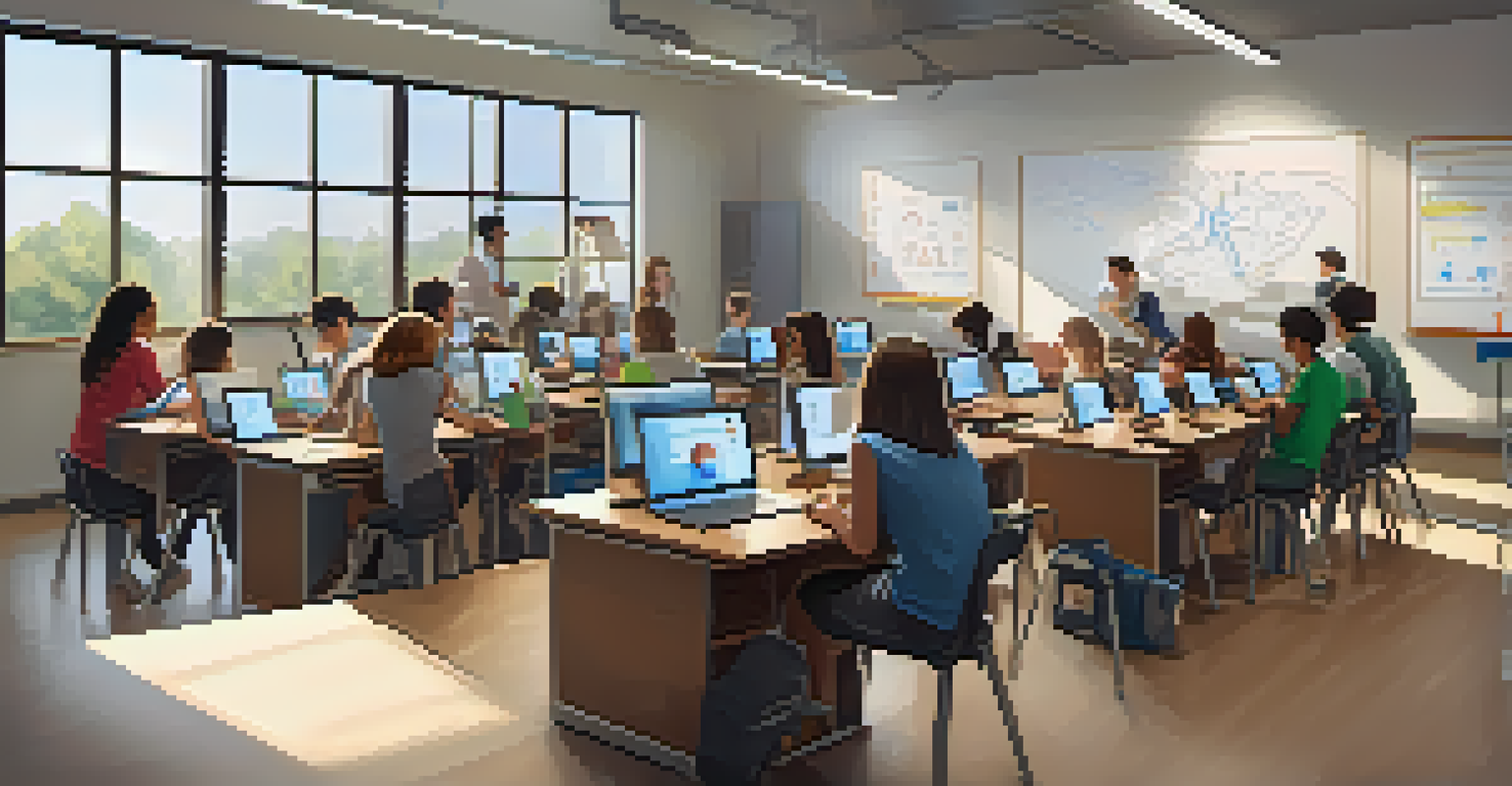Understanding the Fundamentals of Student-Centered Learning

What is Student-Centered Learning?
Student-centered learning is an educational approach that focuses on the needs, interests, and abilities of students. Unlike traditional methods where teachers are the primary source of knowledge, this model encourages students to take an active role in their learning process. It fosters a collaborative environment where learners engage with content in ways that are meaningful to them.
Education is not the filling of a pail, but the lighting of a fire.
Think of it like a cooking class where each student chooses their dish to create. Instead of everyone making the same recipe, they explore different flavors and techniques based on their preferences. This not only makes the experience enjoyable but also helps them learn more effectively.
Ultimately, student-centered learning promotes autonomy, critical thinking, and a deeper understanding of material, making education more relevant and enjoyable for learners.
Key Principles of Student-Centered Learning
There are several key principles that underpin student-centered learning. First, it emphasizes personalized learning, which means adapting lessons to fit individual student needs. This might involve offering different resources or allowing students to choose how they demonstrate understanding.

Another principle is active learning, where students participate in discussions, problem-solving, and hands-on activities. For example, instead of passively listening to a lecture, students might work in groups to tackle real-world problems, fostering collaboration and engagement.
Focus on Student Needs
Student-centered learning prioritizes the individual needs, interests, and abilities of students, fostering a more engaging and effective educational experience.
Lastly, a growth mindset is encouraged, allowing students to see challenges as opportunities for growth rather than setbacks. This principle empowers them to take risks and learn from their mistakes.
The Role of Teachers in Student-Centered Learning
In a student-centered learning environment, teachers take on a different role than in traditional settings. Instead of being the sole authority, they become facilitators or guides who support students in their learning journeys. This shift requires teachers to cultivate a deep understanding of their students' interests and learning styles.
The greatest sign of success for a teacher is to be able to say, 'The children are now working as if I did not exist.'
For instance, a teacher might create a learning plan that allows for flexible pacing or incorporate students’ feedback into lesson planning. This collaborative approach helps build stronger relationships between teachers and students, promoting a sense of belonging.
Moreover, teachers encourage self-directed learning by providing resources and tools that empower students to explore topics in depth, rather than simply delivering information.
Benefits of Student-Centered Learning
The benefits of student-centered learning are numerous, significantly impacting student motivation and achievement. When students are given agency over their learning, they are more likely to be engaged and invested in their education. This intrinsic motivation can lead to higher academic performance and a love for learning that lasts a lifetime.
Additionally, this approach fosters critical thinking skills. By encouraging students to ask questions, analyze information, and apply their knowledge to real-world situations, they develop the ability to think independently. For example, students might engage in projects that require them to research solutions to community issues, linking classroom learning to real-life applications.
Teacher as Facilitator
In this model, teachers shift from being the primary source of knowledge to facilitators who support and guide students through their learning journeys.
Moreover, student-centered learning prepares students for the future. As they learn to collaborate, communicate, and think critically, they gain skills that are essential in today’s workforce.
Challenges of Implementing Student-Centered Learning
While the benefits are clear, implementing student-centered learning can come with challenges. One significant hurdle is the need for teacher training and support. Educators may need guidance on how to shift from a traditional to a student-centered approach, which can require a change in mindset and teaching strategies.
Additionally, classroom management can be more complex in a student-centered environment. With students engaged in different tasks and projects, teachers must find effective ways to maintain order and ensure that all students are focused and productive.
Finally, there may be resistance from parents or stakeholders who are accustomed to traditional teaching methods. Educating them about the benefits of student-centered learning can help build support for these initiatives.
Integrating Technology in Student-Centered Learning
Technology can play a pivotal role in enhancing student-centered learning experiences. Digital tools and resources can provide students with access to a wealth of information, enabling them to explore topics that interest them at their own pace. For example, online platforms can allow students to collaborate on projects or participate in discussions outside of the classroom.
Additionally, technology can facilitate personalized learning through adaptive learning software that adjusts to each student's skill level. This means that students can work on assignments that challenge them appropriately, ensuring they remain engaged and motivated.
Real-Life Applications
Methods like project-based learning and flipped classrooms illustrate how student-centered approaches can enhance engagement and relevance in education.
Moreover, technology can help in tracking student progress and providing immediate feedback, which is essential for fostering a growth mindset and helping students take ownership of their learning.
Real-Life Examples of Student-Centered Learning
To better understand student-centered learning, let's look at some real-life examples. One notable case is the Montessori method, where students choose their activities and work at their own pace, promoting independence and self-motivation. This approach has seen significant success in fostering a lifelong love for learning among students.
Another example is project-based learning, where students engage in projects that require critical thinking and collaboration. Schools that implement this model often report higher levels of student engagement and better retention of knowledge, as students see the relevance of their work.

Lastly, flipped classrooms have gained traction. In this model, students learn new content at home through videos or readings and then engage in hands-on activities and discussions in class. This approach allows for more interactive and personalized learning experiences.